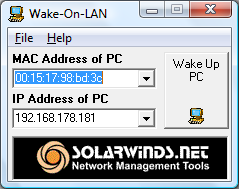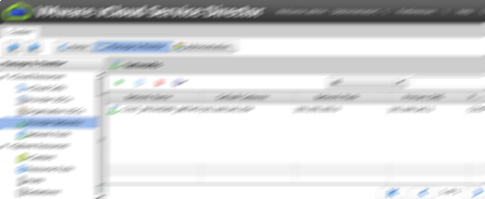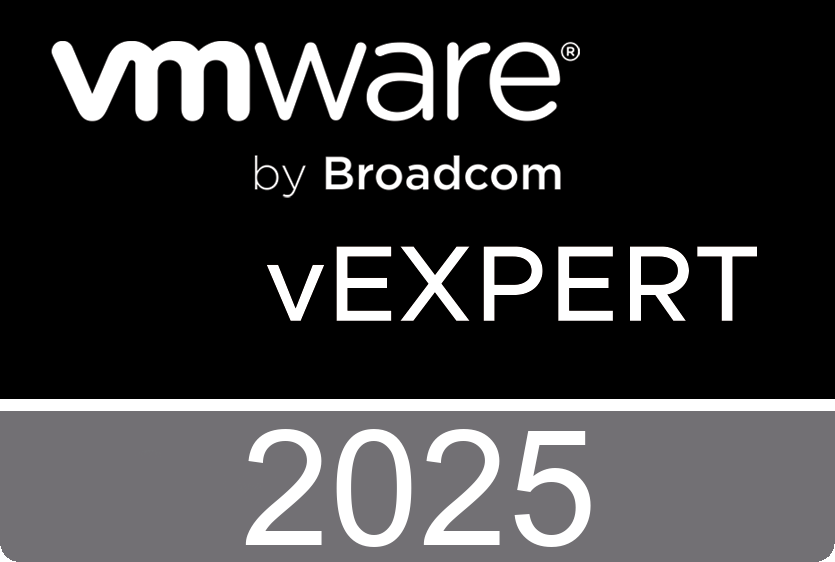A short 7 minute video to show you how Veloxum can improve the performance of your VMware environment. When you finish this video you might want to download the software and try it yourself.
Saturday, May 8. 2010
Upcoming new training course - VMware vSphere: Manage and Design for Security
This soon to be released VMware Training Course will show you how to follow best practices for secure design, deployment, and operations of a VMware vSphere™ environment. Through lecture, discussion, and hands-on practice, you will gain the knowledge and skills necessary to meet the security and compliance goals of your organization. Because this course is currently beta, there may be changes to the final course.
Objectives
- Identify vulnerabilities in the current design of a vSphere environment and recommend corrective actions
- Harden vSphere components as described in the security hardening guides for vSphere 4
- Use VMware® vShield Zones to provide firewall protection to virtual machines and monitor virtual machine network traffic
- Recommend configuration and change management policies, processes, and systems
Tuesday, May 4. 2010
Download VMware Player 3.1 RC
The VMware Player 3.1 Release Candidate includes most of the same great features added to VMware Workstation including all of the graphics, performance and virtual hardware improvements. Some release highlights include:
- OpenGL 2.1 support for Windows 7 and Vista guests: The addition of hardware accelerated OpenGL 2.1 support to the WDDM driver enables many more graphics applications to run inside of your virtual machines.
- Improved graphics performance: Significant enhancements have been made to the VMware WDDM driver that have produced benchmark results that are up to 80% faster. The updated driver also produces smoother video playback and addresses many reported rendering issues. Of course games run better as well!
- 8-way SMP support plus virtual disks up to 2TB in size: The virtual hardware continues to become more powerful to meet the needs of Workstation customers who are running server class applications.
- OVF 1.0 support: Including the OVF Tool with this release enables users to easily import or export virtual machines and vApps and move them to vSphere or up into the cloud.
- Direct Launch: Blur the distinction between running native and virtual applications by launching an application installed in a virtual machine directly from the start menu or taskbar of the host system.
- Automatic software updates: These VMware applications can now detect when a new version is released and are able to update at the click of a button.
- Fedora virtual machines: VMware is excited about finally offering support for running one of the most popular Linux distributions on the planet!
Whitepaper - Best Practices for Running VMware vSphere on NFS
This paper provides an overview of the considerations and best practices for deployment of VMware vSphere on NFS based storage. It also examines the myths that exist and will attempt to dispel confusion as to when NFS should and should not be used with vSphere. It will also provide some troubleshooting tips and tricks. It’s written by Paul Manning, a Storage Architect in the technical marketing group at VMware and is focused on virtual storage management.
The significant presence of Network Filesystem Storage (NFS) in the datacenter today, as well as the lower cost-per-port for IP based Storage, has lead to many people wanting to deploy virtualization environments with Network Attached Storage (NAS) shared storage resources.
As virtualization increases adoption, so does the deployment of VMware ESX servers that leverage NAS. For the purpose of clarity, both NFS and NAS refer to the same type of storage protocol and will be used as terms for the same thing throughout this paper.
The capabilities of VMware Virtual Infrastructure 3 (VI3) on NFS are very similar to the VMware vSphere™ on block-based storage. VMware offers support for almost all features and functions on NFS—as it does for vSphere on SAN. Running vSphere on NFS is a very viable option for many virtualization deployments as it offers strong performance and stability if configured correctly.
http://vmware.com/files/pdf/VMware_NFS_BestPractices_WP_EN.pdf
Sunday, May 2. 2010
CCBoot supports VMDK disk files created by VMware workstation
CCBoot allows a diskless boot of either Windows XP, Windows 2003, Windows Vista, Windows 7, or Windows 2008 from an iSCSI target virtual machine remotely located over a standard IP network. Diskless boot makes it possible for VM’s to be operated without their own virtual disk. The diskless VM is connected to a VMware Workstation VMDK file over a network and boots up an operating system from a remotely located virtual machine. CCBoot is the convergence of the rapidly emerging iSCSI protocol with gPXE diskless boot technology.

Saturday, May 1. 2010
RVTools version 2.9 has been released
Rob de Veij over at Robware.net has released version 2.9 of the most awesome utility I know, well if you don’t count in the vmClient :-) You better check out the newest release of RVTools. I already did, and recorded a walkthrough which can be watched here in HD quality. You can also take a peek at Vimeo.
RVTools is a windows .NET 2.0 application which uses the VI SDK to display information about your virtual machines and ESX hosts. Interacting with VirtualCenter 2.5, ESX 3.5, ESX3i, ESX4i and vSphere 4 RVTools is able to list information about cpu, memory, disks, nics, cd-rom, floppy drives, snapshots, VMware tools, ESX hosts, nics, datastores, switches, ports and health checks. With RVTools you can disconnect the cd-rom or floppy drives from the virtual machines and RVTools is able to list the current version of the VMware Tools installed inside each virtual machine and update them to the latest version.
Version 2.9 (April 2010)
• On vHost tab new fields: Vendor and model.
• On vHost tab new fields: Bios version and Bios release date.
• On vInfo tab new field: VM overall size in bytes (visible when using VI API 4.0)
• On vSnapshot tab new fields: Snapshot filename and size in bytes (visible when using VI API 4.0)
• New vNic tab. The vNic tab displays for each physival nic on the host the following fields: Host, datacenter, cluster name, network device, driver, speed, duplex setting, mac address, PCI and wakeon switch.
• Layout change on vHost, vSwitch and vPort tabpages. They now all start with host name, datacenter and cluster name.
• The commandline function ExportAll extended with an extra optional parameter. It's now possible to specify the directory where the export files are written.
Friday, April 30. 2010
Using Wake-on-LAN (WOL) to power on your ESX hosts
 Wake-on-LAN (WOL) for the VMware DPM feature is fully supported but what if all your ESX hosts are powered off and there’s no vCenter server available to send the WOL packet to exit the standby or powered off mode. In my case I’m using two Asus barebones for my home lab, most of the time they are powered off but when I want to do some magic and power on my home lab I have to go to my “server room” and hit the power switch manually because the barebones aren’t supporting ILO or IPMI.
Wake-on-LAN (WOL) for the VMware DPM feature is fully supported but what if all your ESX hosts are powered off and there’s no vCenter server available to send the WOL packet to exit the standby or powered off mode. In my case I’m using two Asus barebones for my home lab, most of the time they are powered off but when I want to do some magic and power on my home lab I have to go to my “server room” and hit the power switch manually because the barebones aren’t supporting ILO or IPMI.
So is there a possibility to power on your ESX host with WOL? Yes there is! I’ve used the Free Wake-On-LAN from Solarwinds, it magically powers up your ESX host. When the remote network adapter hears a "Magic Packet" created for its unique Kernel Port MAC and IP address, the network adapter alerts the ESX host to power up.
If Wake-On-LAN is enabled in the computer's BIOS settings, then the system will start up just as if the power button has been pressed. When the ESX host is shut down, its network interface card is still receiving power and keeps listening on the network for a magic packet to arrive – enabling Wake-On-LAN to do its magic!
Packet recieved from 192.168.178.19 on port 61877 at 14:17:46 packet length : 102![]() 00000000 : FF FF FF FF FF FF 00 15 17 98 BD 3C 00 15 17 98
00000000 : FF FF FF FF FF FF 00 15 17 98 BD 3C 00 15 17 98
00000010 : BD 3C 00 15 17 98 BD 3C 00 15 17 98 BD 3C 00 15
00000020 : 17 98 BD 3C 00 15 17 98 BD 3C 00 15 17 98 BD 3C
00000030 : 00 15 17 98 BD 3C 00 15 17 98 BD 3C 00 15 17 98
00000040 : BD 3C 00 15 17 98 BD 3C 00 15 17 98 BD 3C 00 15 ![]() 00000050 : 17 98 BD 3C 00 15 17 98 BD 3C 00 15 17 98 BD 3C
00000050 : 17 98 BD 3C 00 15 17 98 BD 3C 00 15 17 98 BD 3C
00000060 : 00 15 17 98 BD 3C
Thursday, April 29. 2010
Total Network Monitor 1.1.3 is released. Now the program is absolutely free!
 Total Network Monitor is a software for the continuous control over the efficiency of your network, separate computers, network and system utilities that make the essence of your network place and need to be thoroughly monitored. Total Network Monitor will alert you in case of failures and unpredictable errors by many ways before situation becomes threatening to your work. It will build a detailed report on the type and time of the error or failure. You always have an opportunity to check any aspect of this or that utility, server or file system: HTTP, FTP, SMTP/POP3, IMAP, Event Log, Service State, Registry and many other. To all these benefits network map and user-friendly interface make your work with the software the most demonstrable.
Total Network Monitor is a software for the continuous control over the efficiency of your network, separate computers, network and system utilities that make the essence of your network place and need to be thoroughly monitored. Total Network Monitor will alert you in case of failures and unpredictable errors by many ways before situation becomes threatening to your work. It will build a detailed report on the type and time of the error or failure. You always have an opportunity to check any aspect of this or that utility, server or file system: HTTP, FTP, SMTP/POP3, IMAP, Event Log, Service State, Registry and many other. To all these benefits network map and user-friendly interface make your work with the software the most demonstrable.
Map allows to build a demonstrative diagram of your network, to group the computers not only into groups but also to arrange them topographically, to show all the variety of interconnections between network devices. To go to network map display choose option Map view in the main menu View.
Wednesday, April 28. 2010
vCloud Service Director Step by Step by The Rain Makers
I've just discovered a new VMware corporate blog with the name “The Rain Makers”. The contributing author; Joao Crespo is working on a real cool document which provides a first insight to vCSD look and feel and assists on how to perform some basic administration tasks.

vCloud Network Isolation Backed - Create a network pool backed by vCloud isolated networks. A vCloud isolated network spans hosts and provides traffic isolation from other networks. The system provisions vCloud isolated networks automatically.

Update: The vCSD - Step by Step Guide was posted at http://communities.vmware.com/blogs/therainmakers/ but was made mistakenly available to the general community. It should have been availlable for registered Beta users only. It has been removed now.
Tuesday, April 27. 2010
Registration for VMworld 2010 is now open!
Register for VMworld 2010 before July 23rd and take advantage of your €200 early bird discount.
VMworld, brought to you by VMware, gives you unparalleled access to educational opportunities that will show you how to reduce IT complexity, and enable IT as a service through virtualization and cloud computing. Join the event to:
Learn
Select from more than 150 Breakout Sessions and Hands on Labs that cover topics such as leveraging the public cloud, virtualizing enterprise applications and managing desktops as a service.
Engage
Meet one on one with Knowledge Experts or join group discussions to learn and share with peers and industry experts alike.
Network
Visit industry-leading, technology partners showcasing complementary solutions that can help you dramatically reduce your IT complexity. Don’t miss out on your savings – or the education and training opportunities found at VMworld 2010.






